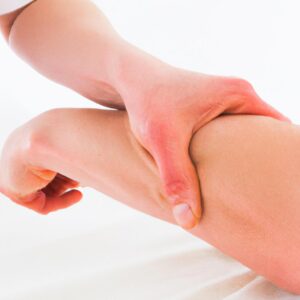**”The Role of Cadence Analysis in Optimizing Running Performance: Techniques for Finding Your Ideal Stride Frequency”**
The Role of Cadence Analysis in Optimizing Running Performance: Techniques for Finding Your Ideal Stride Frequency
Running is a beautiful combination of physical exertion and mental discipline. However, many runners overlook a crucial aspect of their performance: cadence. Cadence, or stride frequency, refers to the number of steps a runner takes per minute. Understanding and optimizing your cadence can significantly enhance your running efficiency and reduce the risk of injury. In this blog post, we will explore the importance of cadence analysis, techniques to determine your ideal stride frequency, nutrition tips, exercise advice, and the health benefits of improved running performance.
Understanding Cadence and Its Importance
What is Cadence?
Cadence is typically measured in steps per minute (SPM). For instance, elite runners often maintain a cadence of 180 SPM or more. On the other hand, recreational runners may find their cadence ranges from 150 to 170 SPM. It is essential to understand that there is no one-size-fits-all cadence; each runner has a unique optimal cadence that can enhance their performance.
Why Optimize Your Cadence?
Improving your cadence can lead to more efficient running. Consequently, it may decrease the energy expenditure required for your runs. A higher cadence often correlates with shorter ground contact time, which can, in turn, reduce the risk of overuse injuries. Therefore, focusing on cadence not only enhances performance but also promotes long-term running health.
Techniques for Finding Your Ideal Stride Frequency
1. Monitor Your Current Cadence
To optimize your running performance, the first step is to determine your existing cadence. You can do this by counting the number of steps you take in one minute while running at a comfortable pace. Alternatively, many running watches and apps can track your cadence for you. Once you have established your baseline, you can begin working towards your ideal cadence.
2. Gradual Adjustments
After identifying your current cadence, gradually adjust it to find an optimal frequency. For example, if your current cadence is 160 SPM, consider increasing it by 5% to 168 SPM. It is crucial to make these adjustments incrementally; sudden changes can lead to injury. Therefore, focus on small, sustainable improvements over time.
3. Use a Metronome
A metronome can be a valuable tool for cadence training. You can set the metronome to your target cadence and run in sync with it. Moreover, many running apps feature built-in metronomes or cadence cues. Consequently, this auditory feedback helps reinforce the desired stride frequency, making it easier to maintain during your runs.
Nutrition Tips for Optimal Performance
Fueling Your Body
Nutrition plays a significant role in running performance, and combining proper nutrition with cadence training can yield optimal results. For instance, consuming a balanced diet rich in carbohydrates, proteins, and healthy fats can provide the necessary energy for your runs. In addition, staying hydrated is critical; dehydration can negatively affect your performance and cadence.
Pre-Run Snacks
In the hours leading up to your run, consider consuming a light snack containing carbohydrates and proteins. Foods such as bananas, oatmeal, or a protein bar can provide a quick energy boost. Furthermore, avoid heavy meals close to your run, as they can lead to discomfort and hinder your ability to maintain an ideal cadence.
Exercise Advice: Incorporating Cadence Training
Drills to Improve Cadence
Incorporating specific drills into your training routine can help you improve your cadence. High-knees and butt kicks are excellent exercises that promote a quicker turnover of your legs. Moreover, hill sprints can also be beneficial, as they force you to drive your knees higher and shorten your stride, thereby increasing your cadence.
Consistent Practice
As with any skill, consistency is key. Therefore, dedicate a portion of your weekly training to focus on cadence. For example, you could set aside one or two days a week for cadence-specific workouts. Consequently, you will be more likely to see improvements in your overall running performance.
Health Benefits of Improved Running Performance
Reduced Injury Risk
One of the most significant advantages of optimizing your cadence is the potential to reduce the risk of injuries. A higher cadence often leads to less impact on the joints, which can decrease the likelihood of common running injuries such as shin splints, knee pain, and plantar fasciitis. Therefore, as you fine-tune your stride frequency, you are also investing in your long-term health.
Enhanced Endurance
In addition to reducing injury risks, an optimal cadence can improve your overall endurance. When you run with a higher cadence, you expend less energy with each step, allowing you to maintain your pace longer. Consequently, this can lead to better performance during races and training sessions.
Conclusion
Cadence analysis plays a critical role in optimizing running performance, and finding your ideal stride frequency can yield numerous benefits. By monitoring your current cadence, making gradual adjustments, and utilizing tools like metronomes, you can enhance your running efficiency. Coupled with proper nutrition and targeted exercise, optimizing your cadence can lead to improved endurance and reduced injury risk. Therefore, as you lace up your running shoes, remember to pay attention to your cadence—it might just be the key to unlocking your full potential as a runner. Happy running!
FAQ
What is cadence in running, and why is it important?
Cadence, or stride frequency, refers to the number of steps a runner takes per minute, typically measured in steps per minute (SPM). It is important because optimizing your cadence can enhance running efficiency, reduce energy expenditure, and decrease the risk of overuse injuries. Each runner has a unique optimal cadence that can significantly improve their performance.
How can I find my ideal cadence?
To find your ideal cadence, start by monitoring your current cadence using a watch or app that tracks your steps per minute while running at a comfortable pace. Once you have this baseline, make gradual adjustments—typically increasing by about 5%—and consider using a metronome to help maintain your target cadence during runs.
What are the health benefits of optimizing my running cadence?
Optimizing your running cadence can lead to several health benefits, including a reduced risk of injuries due to less impact on your joints. Additionally, a higher cadence can improve your overall endurance by allowing you to expend less energy with each step. This can result in better performance during races and training sessions, contributing to long-term running health.















Post Comment